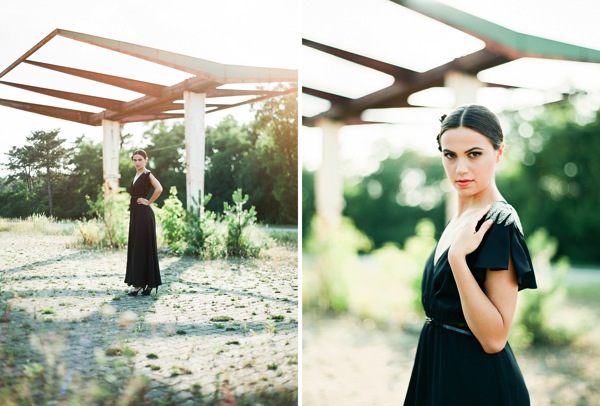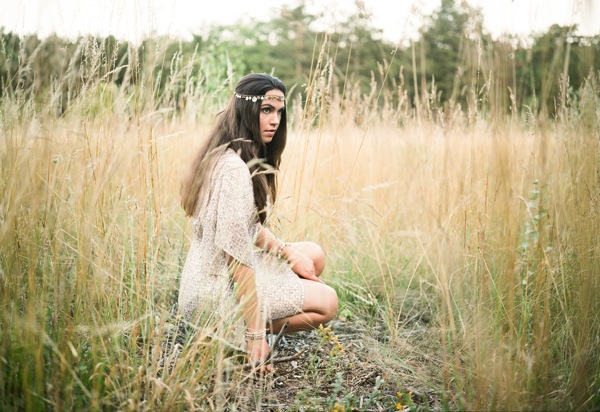by Matthias Hombauer and Karl Blümel from “The Analog Docs”.

We are two professional music and wedding photographers and we shoot digital when necessary. However, we clearly see the point of going back to analog like a lot of pros are doing nowadays. In this post, we would like to discuss the benefits as well as the drawbacks of film photography from our point of view.
Since we love film, we decided to start our own project named “Analog Docs“, where we exclusively use analog medium format cameras.
The following points are true for all analog camera systems.

1. The Look
Ok, let’s face it. Film shooters will tell you how much they love this special look of film. This is similar to music lovers who tell you that vinyl sounds more organic than a CD. A lot of digital shooters try to imitate this look on their digital files – but you can hardly get there. Film has an incredible colour palette and a huge dynamic range of detail in both highlights and shadows. So why imitate when you simply can shoot analog?

2. Film will make you a Better Photographer, Promise!
When shooting film, you are bound to know exactly what you are doing. You have to nail the exposure, how you frame the picture and how to direct the model so that he or she doesn’t have his or her eyes closed in the moment you release the shutter. Every picture costs money and believe us, you want to be sure to know your camera beforehand. Furthermore, most of the cameras have got only manual focus lenses and you need an external light meter to get the right exposure. This sounds a little bit frightening to someone who has experience only in digital photography. It’s a steep learning curve but it’s absolutely worth it.

3. Film is a Time Saver
When we are shooting digital, we return from a job with hundreds of pictures, which have to be sorted out and post-processed (we always shoot RAW). With film, we come back with 40 pictures and most of them are awesome. We have outsourced the developing and scanning process of our films and get them sent from our photo lab. Once you know how to handle the different films like Fuji or Kodak already in the camera, you will save a lot of time with post-production. Honestly saying, there is almost no post-processing necessary and you can spend more time on doing the things you love, too.

4. Film Gear is Cheap (but this Might Change in the Future)
20 years ago, a professional medium format camera was as expensive as a car. Today you can pick a Mamiya, Hasselblad or Fuji for a decent price and you’ve got an awesome camera, like the pros were/are using. For Contax cameras, this is another story. The price is skyrocketing in the second hand market, cause it is the most popular camera for wedding photographers nowadays. However, you can also acquire an old 35mm camera for a few bucks and get the whole analog experience with it.

5. BOKEH Madness
BOKEH (Japanese for ‘blur’) is the way “the lens renders out-of-focus points of light”. And this seems to be the search for the Holy Grail for every portrait photographer. There are tons of articles and discussions going on in the web about which lens is the best. The bigger the aperture is, e.g. 1.2, 1.4, the narrower is the depth of field. This makes you just focus on the eyes where the eyelashes are already out of focus. The quality of BOKEH on a medium format camera looks different than a 35mm camera system. So therefore we love our medium format cameras to get this special out-of-focus look.

6. Forget to search the Rumours Sites
One advantage of these old cameras is that once you bought them you don’t have to satisfy your needs to have the newest equipment for it: It’s as simple as that: There will not be new stuff released. Most of the cameras we use are 30+ years old and everything you need is available on the second hand market. And there are also a lot of reviews about the equipment in the web, which make it easier to decide which system you should get. Additionally, these cameras are built like tanks and they are of superior quality compared to the newest DSLRs.

Advantages:
- the look
- you will become a better photographer
- film saves you time
- it’s still cheap (when you know what you are doing)
- gorgeous BOKEH
Disadvantages:
- old camera systems, sometimes no service for them
- you have to calculate per picture
- it takes more effort to get your pictures

To us as professional photographers, the advantages are still striking. We provide the best quality you can get from a camera to our clients, which is the most important point. As said in the beginning, we are also shooting digital when needed. When shooting for newspapers and magazines, the time pressure to deliver the pictures won’t always allow for the analog option. However, the best magazine photographers like Martin Schoeller or Dan Winters are still shooting film.
Sure, there is the option of digital medium format cameras, which are gaining wide popularity in the scene. The prices are dropping but they are still in the 30 000$ range. Compared to digital, buying an analog medium format system is a no-brainer.

So the final question you should ask yourself is: What do I use my camera for?
If you are a sports or newspaper photographer, then shooting film might not be the best choice. But for all of you who want to shoot great portraits, landscapes or architecture and you are willing to learn more about the craft of photography, you should definitely give film a chance.
Matthias Hombauer (Ph.D.) and Karl Blümel (MD) are both professional photographers based in Vienna/Austria. They are founder of “The Analog Docs”. They also have a facebook fanpage.
Post originally from: Digital Photography Tips.
Check out our more Photography Tips at Photography Tips for Beginners, Portrait Photography Tips and Wedding Photography Tips.
Why Analog Photography (Still) Rocks!


















 Dies ist ein Artikel von Johnny Patience. Er ist als Fotograf für Bondshots Photography international tätig und lebt in West Cork, Irland. Johnny beschäftigt sich überwiegend mit cinematischen und fotojournalistischen Elementen in den Bereichen Fine-Art, Portrait und Commercial.
Dies ist ein Artikel von Johnny Patience. Er ist als Fotograf für Bondshots Photography international tätig und lebt in West Cork, Irland. Johnny beschäftigt sich überwiegend mit cinematischen und fotojournalistischen Elementen in den Bereichen Fine-Art, Portrait und Commercial.










You must be logged in to post a comment.